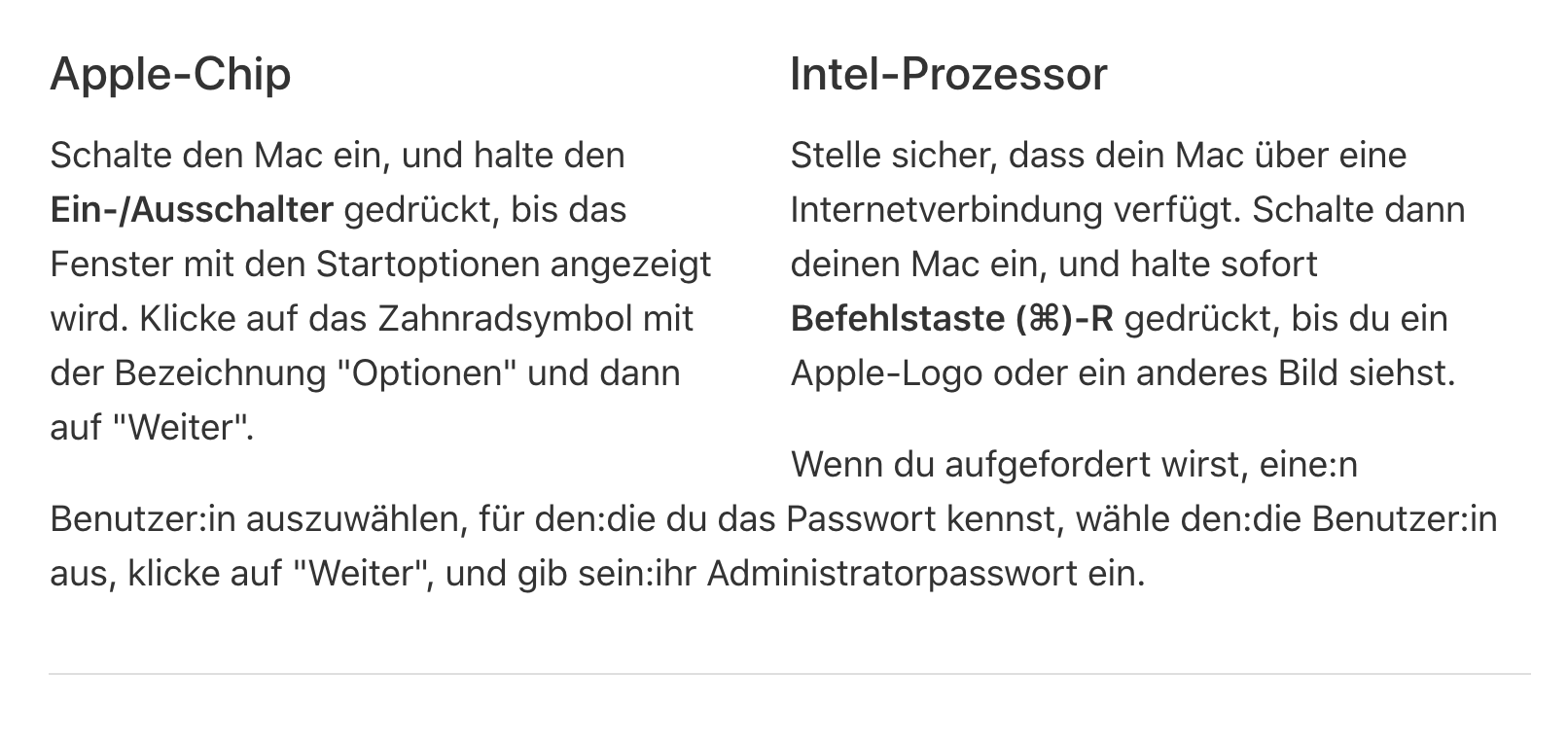After the system-wide introduction of the gender colon in iOS 15, Apple also starts to gender newly created support documents in German-speaking countries.
For example, if you want to read how to reinstall macOS, you can take a look at the new variant. There, Apple uses the colon not only for the feminine appendage -in (singular) or -innen (plural), but also connects masculine and feminine articles this way. A corresponding sentence then looks like this:
Wenn du aufgefordert wirst, eine:n Benutzer:in auszuwählen, für den:die du das Passwort kennst, wähle den:die Benutzer:in aus.
Whether Apple now opens up its own rules is a moot point. If you google how to gender correctly (if you want to), you get different answers: The tips of the TU-Dresden do not even have the colon, geschicktgendern.de lists the option under “Common spellings that tend to disturb the reading flow” and the Rat für deutsche Rechtschreibung rejects punctuation marks in words altogether. Also, putting articles together with a colon or asterisk (or slash, etc.) is apparently not yet general agreement. Scribbr even writes that this variant cannot be used if two words are different. The Uni Bielefeld, on the other hand, does it like Apple, but with asterisks.
So when it comes to gendering, it remains exciting. Not only are very many against it, many companies and media houses are simply changing over. Whether the colon, the asterisk, the indented I, the slash, the bracketing, the underscore, the double mention, the footnote with further use of the generic masculine, the alternating masculine and feminine forum, the generic feminine or the formulation as a participle will be recognized as correct, remains to be seen in the next few years. Also, the incorrect but perhaps correct gluing of articles together will probably catch on with some. All in all, it will probably become more difficult to define a spelling that is valid for all, since one is confronted with a multitude of variants. However, one thing should be certain for Apple users: with the next macOS update, gendering should also find its way here.




